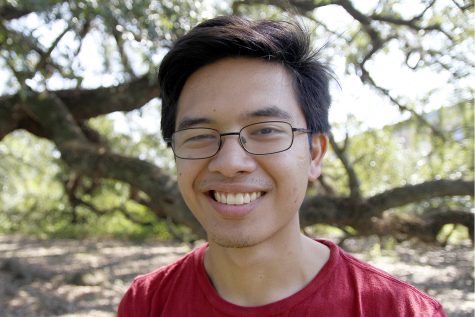
Sculptor and full-time instructor at the University of Alabama Jamey Grimes will showcase his sculptures at CAG from Oct. 11 to Nov. 10. Courtesy of Jamey Grimes
Fanfare will welcome the sculpting talents of Jamey Grimes to the Contemporary Art Gallery.
The opening reception will be held Oct. 11 from 5-7 p.m., and Grimes’ works will be on display in CAG until Nov. 10. His interest in art became more specified to sculpture over time.
“I grew up in a family that was very supportive of artwork, so I always felt like sculpture was present,” said Grimes. “College and graduate school art teachers introduced more sculptural elements into art classes, and I was inspired by their explorations of 3D objects. While my undergraduate degree was in painting, I did incorporate some sculptural elements into my BFA portfolio. This laid the groundwork to pursue a sculpture MFA degree a few years later.”
While in graduate school, Grimes sought out exhibition opportunities. He has displayed work in the Woods Hall Gallery in Tuscaloosa, Alabama and the Kronos Gallery in Staunton, Virginia among others. He became a full-time instructor at the University of Alabama in 2008.
“It’s great to work in an artistic environment,” said Grimes. “Teaching art is definitely different than making it, but it’s nice that the two can feed off of each other. I enjoy the dialogue with other faculty and students. Many of my 3D Design assignments are puzzles or exercises, and each class responds in different ways. Whenever I think that I have simple assignments already figured out, they find unique ways to consider sculpture that I hadn’t noticed before.”
Grimes discussed what attendees can expect at the exhibition.
“There will definitely be environmental spaces built of plastic that suggest natural forms,” said Grimes. “I use corrugated plastic that is commonly found in real estate or political signs. Large sheets are cut down and melted one at a time, then connected to create gestures within the space. I will bring a variety of colors and experiment with light and shadow.”
Though Grimes has not yet decided on a title, he plans to post an artist statement addressing it. Grimes discussed his passion for sculpture.
“While I remain passionate about drawing and painting, sculpture adds a dynamic element that works well with my imagination,” said Grimes. “I love to mentally picture an object three dimensionally, and then actively explore these imaginary spaces. Sometimes the idea remains hazy and I attempt to clarify these forms through real world construction. In that way, each sculpture is an experimental representation of an imagined space. I enjoy sharing my strange explorations with others, and their experience reveals new patterns, structures and relationships.”
Grimes advised anyone interested in sculpture to think of it as a broad and varied medium.
“Traditional skills like welding, casting and carving remain relevant, but materials and processes can be strange or unconventional,” said Grimes. “Even a pile of candy could be sculpture. Building your ideas generally requires a lot of work, but there are also many opportunities for sculptors. I recommend that curious students try it out, and be patient, as it takes time to develop the skills to match your vision. Success as a sculptor can happen in diverse ways, and there is not one single way to proceed. I find the process of making sculptures to be very fulfilling.”
Grimes finds inspiration in the world around him.
“While imaginative spaces are directly related to how I compose my sculptures, I find that many of the patterns and forms draw on my observations of nature,” said Grimes. “While I don’t feel the need to replicate the natural world, I am generally intrigued by observed patterns and structures. If something in nature grabs my attention, I like to investigate why I notice this particular thing. Often, the sculptures are manifestations of these structures boiled down to their simplest elements.”
Though he draws inspiration from nature, Grimes avoids making facsimiles.
“If I generate a cloud-like structure, it never has as much detail as a real cloud, but I might experiment with how little detail needs to be present to achieve similar effects,” said Grimes. “At a certain point, it becomes too simple and doesn’t have the same read as the observed cloud. At the same time, simple examination of the sculpture reveals plastic construction materials and suspension hardware. It has a raw, industrial quality but also behaves like a form from nature.”
Grimes elaborated how this inspiration affects his sculptures.
“I usually rely on more than one variable but many fewer than you would find in an example from nature,” said Grimes. “This abstraction also opens the possibility for diverse interpretations as viewers will compare the system to other natural patterns. I prefer when it is not so specific.”


